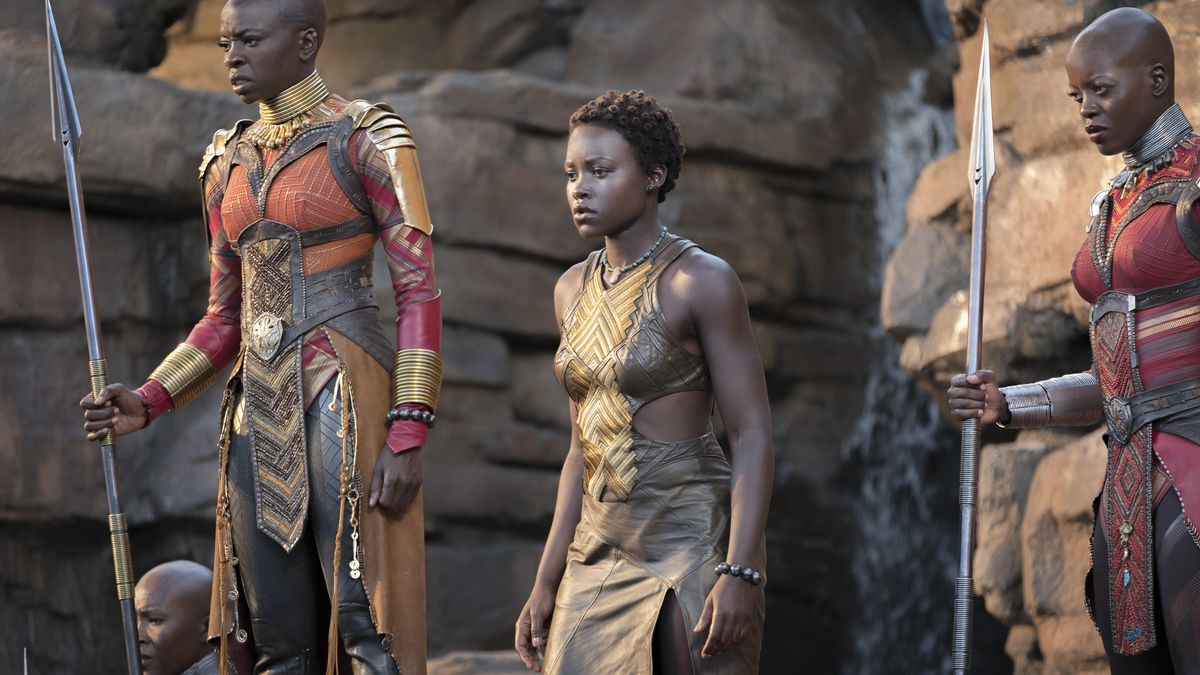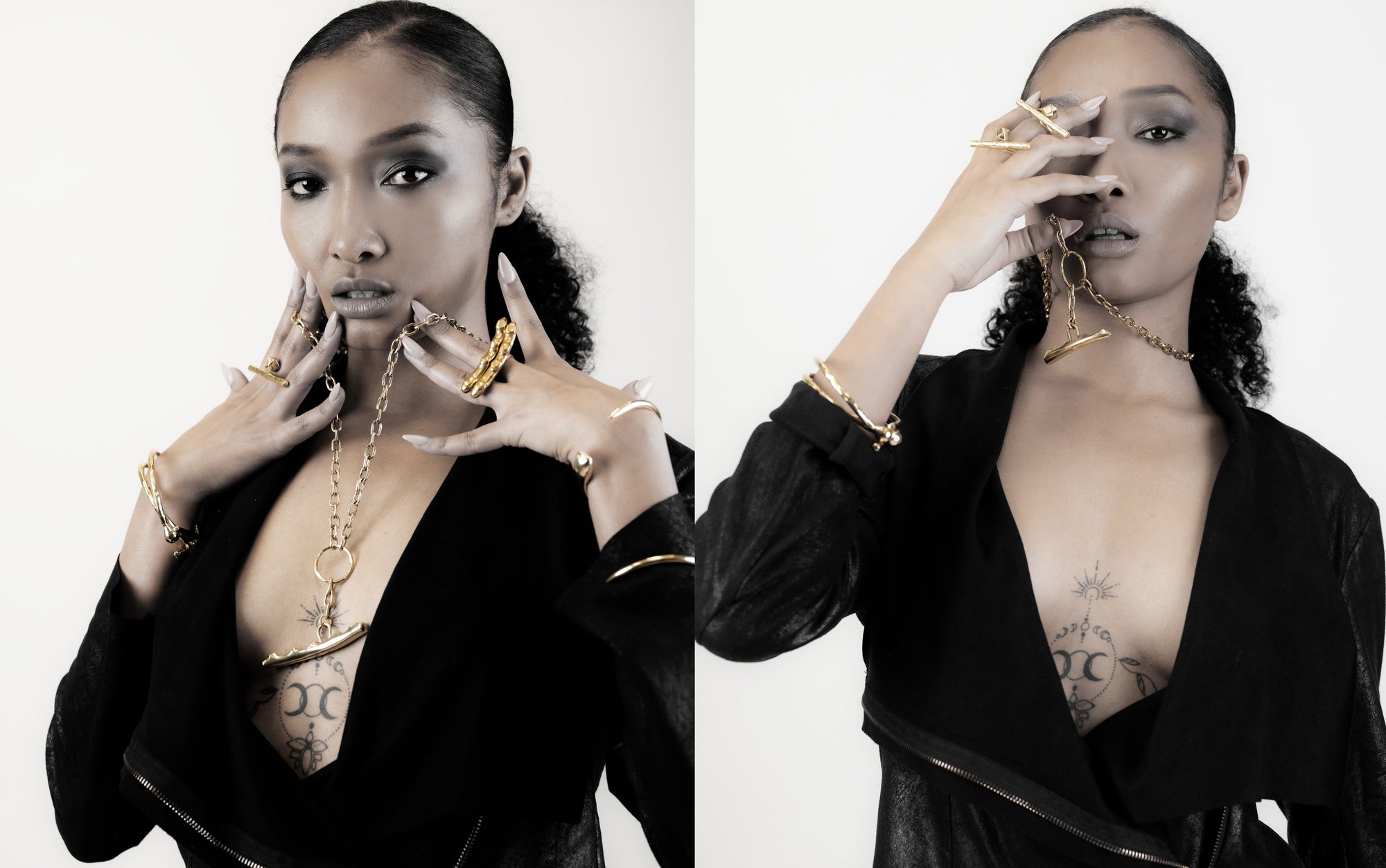How Beyoncé's 'Black is King' indicates an emerging opportunity for African jewelers.
Posted by Adele Dejak on

This is really happening.
There is a ring to this. Over the years, Beyoncé has amassed an imposing assortment of luxurious crowns, statement neckpieces, sparklers, and tailored hoops. Luminary jewelers like Lorraine Schwartz designed a fair amount of her treasure trove. Her fascination with African jewelry has, nevertheless, recently become more obvious with the inclusion of African designers in her videography. Among these designers, Adele Dejak provided some stunning handcrafted jewelry that featured in Beyoncé’s visual album “Black is King” (2020). Such accompanied a splendid display of a pearly black-striped dress by Côte d’Ivoire-based stylist Loza Maléombho.


Beyoncé put on a long procession of trendy African ensembles with the help of her star stylist Zerina Akers and designer Maléombho. The result was quite a spectacle. Other black luminaries credited with the blissful spectacle included D.Bleu.Dazzled and Déviant La Vie. The outcome included a procession of ball gowns evocative of a coming-out party. These styles directly reflect prehistoric cave paintings and epic attire that are reminiscent of African indigenous tribes. The sparkly bodysuits also infused a contemporary fashion sense into the procession.
Beyoncé undoubtedly shows off the beautiful handmade fashion accessories made in Kenya and Africa as a whole. In so doing, Beyoncé altered the perception of African jewelers by honoring those honoring African cultures.


What you actually saw in Black Is King and My Power
In a show of her gentle reverence for the African-themed “Black Is King” (2020), Beyoncé wore Adele Dejak’s Afrika comb necklace. The comb features prominently in a photo she shared on her Instagram. She also sports Adele Dejak’s creation in the video “My Power” (2020). Her crew filmed the visual album’s sequence at a church in downtown Los Angeles. The crew meticulously gave their work a completely Afro-centric look.
That church also featured as the location of that performance in the sequence for Julian Klincewicz’s music video “My Power.” The setting looks not-so-modest and is glamourized by lively lighting and African-themed jewelry. It also has a floral shape on the floor, bearing a resemblance to the West African adinkra symbol Bese Saka. This signifies opulence and harmony.
Beyoncé and her bevy of dancers show up in vivacious red two-piece outfits, which symbolize African Renaissance art. The setting provides a well-thought-out location for a visual album, bringing the performance into a sleek, up-to-the-minute space. But it’s the jewelry that draws more emphasis to the Africanized performance.
In light of her statement of intent, Beyoncé featured Adele Dejak in her list of black-owned businesses. These will benefit from the proceeds of her song “Black Parade” (2019). Beyoncé has also made open her intent to promote African enterprises through her BeyGOOD Foundation Black Business Impact Fund.
Afrika teak comb


What are the implications on Africa’s Jewelry Scene?
Beyoncé has shown that the caliber of talent in Africa’s jewelry scene is inspiring. This goes to performers looking for very thoughtful designers with a great passion for the African Renaissance. Incidentally, the African Renaissance remains the life and soul of the Adele Dejak brand.
The brand has made sure that high-end jewelry is no longer an exclusive club for the rich.
In any case, the Kenyan luxury brand has become even more charged up. It is preparing for other superstars and providing them with megawatt pieces of accessories worth every penny.
Dejak said: “We are also adorned by the likes of global superstars such as Beyoncé, and I feel this reinforces our African Renaissance movement ethos. The jewelry can also empower us while also honoring our ancestors.I feel this is what Beyoncé was trying to do.
Fashion brand Adele Dejak has become the unhampered go-to destination for A-listed celebrities looking to make a dramatic African-themed musical film or visual album.
So, where do we place Africa?
A steadying interest in cross-cultural jewelry is driving the growth of the African market jewelry market. The case of Beyonce also indicates that African jewelers today focus on product innovation by taking advantage of the growing demand for cross-cultural jewelry designs.
Designs inspired by African tribal women and cultures are progressively penetrating the market subject to their popularity. Besides, knowledge of the authenticity of the metals used in the jewelry pieces has likewise powered interest in African-themed jewelry.
Still, some concerns persist. Africa may be the main source of raw materials in the high jewelry industry but most are exported, contributing to an excess of $230-billion global jewelry market. While as much as half of the world’s jewelry is created using materials originating from Africa, no African country is listed among the world’s top 10 jewelry manufacturing countries. This is a concern. Perhaps not for long.


Any foreseen opportunity?
Beyoncé’s move indicates an emerging opportunity for African jewelers to expand further into global markets by cultivating their intellectual property assets, particularly brand recognition.
Enough room also exists for African countries to strengthen their local jewelry industries through the provision of supportive frameworks for local jewelers to expand and take advantage of their IP. Incidentally, IP plays an important role in promoting a successful jewelry business. This is noteworthy, as much of the value of the jewelry firms lies in their brands.
The trademarks utilized for marketing their jewelry products make up vital financial assets due to the premium consumers’ loyal disposition to pay for jewelry products that bear the brand.
Aware that African jewelers have been historically underrepresented in the jewelry industry, a number of initiatives – much different from Beyoncé’s – have recently been set up to assist African designers to get ahead in the jewelry industry.
In mid-last year, 50 jewelry brands set up the Art Smith Memorial Scholarship Fund at the Fashion Institute of Technology in New York City. Some of the sponsors include Brent Neale, For Future Reference (FFR), MUSE, Jemma Wynne, Marlo Laz, Buddha Mama, Briony Raymond, and Sorellina.
The initiative honors the late New York-based jewelry designer Arthur “Art” Smith and supports the resurgence of interests in African artistry. Equally, last year’s resurgence of the Black Lives Matter movement stimulated interest in Black jewelers.

Finally
Adele Dejak is pleasantly optimistic about the prospect of building a feasible jewelry sector with a global reach, although this will depend on how African countries create strong local and regional markets. Once a blossoming sector is created, the reputation of the continent as a jewelry powerhouse will be reset.

